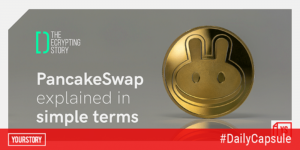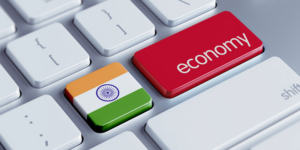In a career spanning two decades, Shireesh Joshi has worked with several retail giants, including Procter & Gamble, Pepsico, and Godrej. Besides India, he has extensively worked in Southeast Asia, which has helped him develop a profound understanding of the retail ecosystem and consumer behaviour.
In 2021, Shireesh joined ONDC, a not-for-profit venture for the development of open ecommerce. Starting with a consultative conversation, he soon came on board as the Chief Business Officer.
“And based on my experience of eight months of briefing about ONDC, even after talking about it, the gravitational pull of the ecommerce that we’re used to is so strong that even the interpretation continues to be in terms of the way ecommerce is today,” remarks Shireesh.
ONDC: a closer look
ONDC is an abbreviation for Open Network for Digital Commerce (ONDC). It represents an ecosystem for unbundled and interoperable ecommerce transactions. The idea was first conceptualised at the start of the COVID-19 pandemic when the government had to devise ways to encourage people to stay at home without causing inconvenience.
In the current ecommerce landscape, buyers and sellers have to be on the same platform or app (a marketplace like Amazon) to complete a transaction. ONDC eliminates that restriction and creates a more democratic ecosystem. Shireesh compares ONDC to concierge services available at luxury hotels.
“So depending on what I’ve asked for, from whatever directory or whatever resources is, he’ll look up, and he’ll say, “Okay, I’ve ordered you a cab,” based on whatever my requirements are. I need an open-top Jeep, or I want a Sedan or an SUV, whatever my requirement, so he’ll find this solution,” he adds.
That’s precisely what ONDC strives to accomplish in the context of ecommerce transactions. For instance, any third-party app (say MyGate) can integrate an ONDC button on their app. That gives their entire user base access to hundreds or thousands of sellers across various product categories. All a user has to do is install an app update.
On the seller side, banks like HDFC can collate and enable catalogs from numerous MSMEs who are already their customers. It lets them leverage an additional revenue stream while letting small sellers take their products to the public. It eliminates the need for them to build their own online store and manage order fulfillment.
“By definition, we are like a highway, and those are like vehicles. And highways don’t compete with vehicles. All vehicles will drive on that highway. So we are the highway on which all vehicles, existing marketplaces, non-marketplaces, new entities, everybody will come and join.” says Shireesh.
Harnessing new opportunities
Large-scale adoption of ONDC isn’t just beneficial to buyers and sellers. It also creates a plethora of new opportunities for other solution providers. While fulfillment centers and logistics companies are already an integral part of ecommerce, ONDC creates room for new service providers.
For instance, a startup can offer specialised packing and unpacking services to sellers. It’ll come in handy when a customer raises a return request for a product. Similarly, one could provide dedicated storage facilities for bulky items like furniture and flooring materials.
Or an image processing company could offer to build catalogs for sellers who aren’t particularly tech-savvy. The unbundled nature of ONDC creates endless possibilities.
“So different people will find different solutions. We’ll all tap into that connectivity that is being provided, but it’s really up to their imagination, creativity, and capability to identify the business opportunity and go for it,” adds Shireesh.
Measuring Success
ONDC aims to accomplish in the world of ecommerce what UPI has achieved in the domain of online payments. That makes it important to measure its overall reach, i.e., what percentage of the population is using ONDC.
Also, in a country like India, it’s crucial to monitor the adoption among previously undigitised consumers. It’s a key indicator of ecommerce penetration and development. While India still has single-digit penetration rates, widespread implementation of ONDC will help scale the number closer to that of neighboring countries like China.
You can listen to the full episode here.
Time stamps:
04: 15 – ONDC: Interoperability & Unbundling
16:15 – Why will Customers use ONDC?
29:30 – “ONDC is not a finished product. It is a capability”
31:00 – Business models, Unsolved Areas and New Opportunities
42:30 – Success Metrics for ONDC










